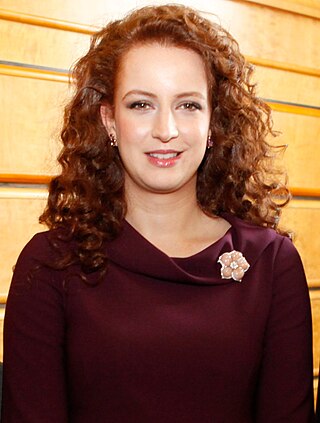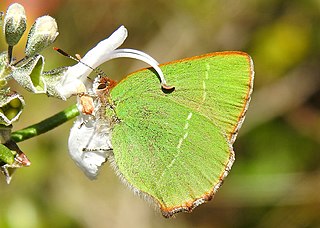Maghrebi Arabic is a vernacular Arabic dialect continuum spoken in the Maghreb. It includes the Moroccan, Algerian, Tunisian, Libyan, Hassaniya and Saharan Arabic dialects. It is known as ad-Dārija. This serves to differentiate the spoken vernacular from Literary Arabic. Maghrebi Arabic has a predominantly Semitic and Arabic vocabulary, although it contains a few Berber loanwords which represent 2–3% of the vocabulary of Libyan Arabic, 8–9% of Algerian and Tunisian Arabic, and 10–15% of Moroccan Arabic. Maghrebi Arabic was formerly spoken in Al-Andalus and Sicily until the 17th and 13th centuries, respectively, in the extinct forms of Andalusi Arabic and Siculo-Arabic. The Maltese language is believed to have its source in a language spoken in Muslim Sicily that ultimately originates from Tunisia, as it contains some typical Maghrebi Arabic areal characteristics.
French North Africa is a term often applied to the three territories that were controlled by France in the North African Maghreb during the colonial era, namely Algeria, Morocco and Tunisia. In contrast to French West Africa and French Equatorial Africa which existed as federations of French colonies and administrative entities in their own right, French North Africa was never more than a term of convenience to refer to the three separately governed territories under different forms of colonial regime.

Anthocharis belia, the Moroccan orange tip, is a butterfly of the family Pieridae. It is found in northwestern Africa. The length of the forewings is 18–20 millimetres (0.7–0.8 in).

The Arab Maghreb Union (AMU) is a political union and economic union trade agreement aiming for economic and future political unity among Arab countries that are located primarily in the Maghreb in North Africa. Its members are the nations of Algeria, Libya, Mauritania, Morocco and Tunisia. The Union has been unable to achieve tangible progress on its goals due to deep economic and political disagreements between Morocco and Algeria regarding, among others, the issue of Western Sahara. No high-level meetings have taken place since 3 July 2008, and commentators regard the Union as largely dormant.

Iphiclides feisthamelii, the southern scarce swallowtail, southern swallowtail or Iberian scarce swallowtail, is a butterfly found in Italy, Slovenia, southern France, Spain, Portugal, Morocco, Algeria and Tunisia. It is sometimes considered a subspecies of I. podalirius.
Berberia abdelkader, the giant grayling, is a species of butterfly in the family Nymphalidae. It is endemic to the North African region, mainly Morocco, Algeria, and Tunisia. It flies in the vast steppes and the males are easily seen flying in search of a shy female. Usually, females are fertilised as soon as they hatch.

Pseudochazara atlantis is a species of butterfly in the family Nymphalidae. It is endemic to Morocco. It flies in barren rocky slopes. The male is found only on large tabular spaces and bare mountain peaks, while the female wanders on the slopes, both for foraging the flowers of Compositae or thyme and to lay her eggs.

Pyronia cecilia, the southern gatekeeper, is a butterfly of Southern Europe and North Africa. It is a member of the subfamily Satyrinae in the family Nymphalidae.

Tomares mauretanicus, the Moroccan hairstreak, is a butterfly of the family Lycaenidae.

Lalla (Lella), Řalla or Řadja is an Amazigh word and title meaning "Lady", "My lady", "Miss." or "Mrs.".

Pyronia is a genus of butterflies from the subfamily Satyrinae in the family Nymphalidae.
This article lists the results of the Morocco national football team from 1957 to 1989.

Callophrys avis, the Chapman's green hairstreak is a small butterfly found in the Palearctic that belongs to the blues family. The males and females of this little butterfly are identical. The underside of the wings is green, the upperside is greyish brown. The green verso is marked by a mediodiscal white line that differentiates this species from Callophrys rubi. The larva feeds on Coriaria myrtifolia, Arbutus unedo, Salvia verbenaca, Viburnum tinus.
The 2020 All Africa Men's and Women's Team Badminton Championships was a continental stage tournament of Thomas and Uber Cups, and also to crown the best men's and women's badminton team in Africa. This tournament was held in Cairo, Egypt between 10 and 13 February 2020.
The Tunisia women's national football team is the representative women's association football team of Tunisia. Its governing body is the Tunisian Football Federation (TFF) and it competes as a member of the Confederation of African Football (CAF).
The Algerian Women's National Football Team represents Algeria in international women's football competitions. Founded during the rapid socio-economic change in North African nations, the Algerian women's football team played its first home game on July 5, 1962 at the Stadium of Algiers. As of, 2021, the Algerian women's team FIFA World Women's Rankings stood at 79th in the world. The highest ranking was at 65th, in June, 2009.
The Morocco women's national football team is the representative women's association football team of Morocco. Its governing body is the Royal Moroccan Football Federation (RMFF) and it competes as a member of the Confederation of African Football (CAF)










